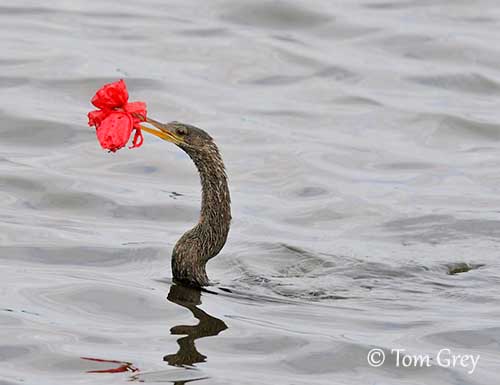
Text by Nicole Bouglouan
Photographers:
Didier Buysse
Vision d’Oiseaux
Steve Garvie
RAINBIRDER Photo galleries
Tom Grey
Tom Grey's Bird Pictures
Patrick Ingremeau
TAMANDUA
Ingo Waschkies
My bird pictures on Pbase
Callie de Wet
GALLERY
Philippe et Aline Wolfer
GALERIE
Sources:
HANDBOOK OF THE BIRDS OF THE WORLD vol 1 by Josep del Hoyo-Andrew Elliot-Jordi Sargatal - Lynx Edicions - ISBN: 8487334105
BirdLife International (BirdLife International)
Animal Diversity Web (University of Michigan Museum of Zoology)
Wikipedia, the free encyclopaedia
CREAGUS@Monterey Bay (Don Roberson)
All About Birds (Cornell Lab of Ornithology)
FAMILY ANHINGIDAE
Order Suliformes
Darters
Despite numerous similarities with the cormorants, the darters differ from Phalacrocoracidae in some morphological features and behaviour. However, both families are placed in the same order Suliformes. There are four species of darters and seven subspecies, sharing a large range in the South hemisphere.
These large birds have long, broad wings and tail, used for rising up to a great height with help of thermal currents, and then, they soar and glide. The short legs placed well back on the body are not made for walking! Darters are clumsy on land, and keep the wings half opened to maintain balance. In contrast, the four long, webbed toes allow the darters to propel themselves underwater, but the wings are not used for propulsion.
Darters are also called “snakebirds” due to the long, thin neck and the snake-like appearance when the birds are swimming with submerged body, or while both mates twist it during pair-formation displays. Like cormorants, darters dry their plumage after diving. They can be seen in typical posture, perched on a branch with widely open wings and fanned tail in the sun.
The name “darter” is derived from their fishing behaviour when the neck is bent back in an S-shape before the head is thrust forwards with great force to stab the prey with the pointed bill.

Female
The males have mainly black or very dark plumage, becoming glossy during the breeding season. The females have usually duller appearance with pale underparts like the Australian Darter (Anhinga novaehollandiae) or mostly chestnut to brown head, neck and upper breast like the three other species. However, both sexes show long and lanceolate scapulars and white, silver or buff stripes across the upperwing-coverts, forming a pale, conspicuous panel on the wings. The wings are long and broad, and the long tail has twelve broad, stiff rectrices. The legs are short and the feet are webbed.
The juveniles are similar but browner and paler than adults.
The breeding males have a white stripe on side of head and upper neck, but the Anhinga (Anhinga anhinga) lacks this feature. It has an erectile crest on the hindneck, used during displays, and some white feathers on the sides of the upper neck.
On the small, elongated head, the sharp, straight, pointed, dagger-like bill has finely serrated cutting edges. The neck is thin and long, typical of this family. During the breeding season, the bare parts of the face become brightly coloured.
These large birds have an overall length of about 80-97 centimetres and a wingspan of 120 centimetres.
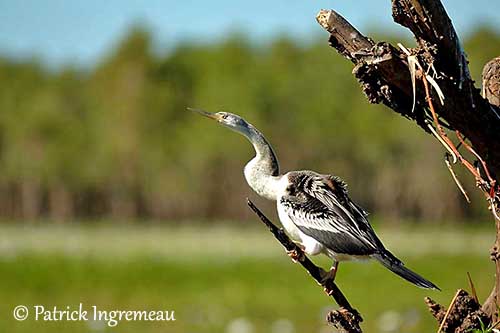
Female
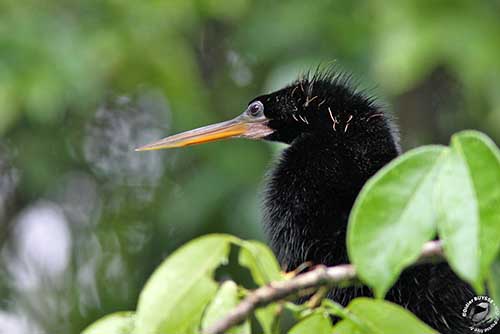
Male
Darters usually frequent a variety of wetlands providing them sheltered shallow waters. They live mainly at freshwater sites including lakes, slow-flowing rivers and marshes. They can be seen occasionally in marine or brackish coastal waters, in estuaries, mangrove swamps, bays and coastal lagoons, and on alkaline lakes inland. The Anhingidae are the least marine species of the order Suliformes.
They breed and roost in forests, woodlands or extensive reedbeds. They need perches including trees, bushes, floating branches and posts for plumage drying. These habitats are usually along the banks or on islets.
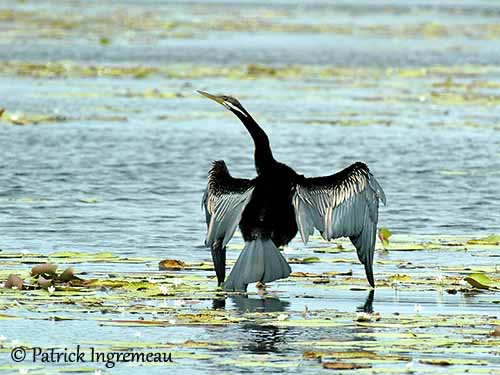
Male
As darters are not able to conserve heat, they lives in warm regions, and are widely distributed throughout the tropical and subtropical regions of the Americas, Africa, Southern Asia, Australia and New Guinea.
They are sedentary in their wide range, but some local movements are reported according to droughts or flooding, generally depending on water levels. However, the populations of northernmost North America migrate southwards to extreme south of the USA or to Mexico.
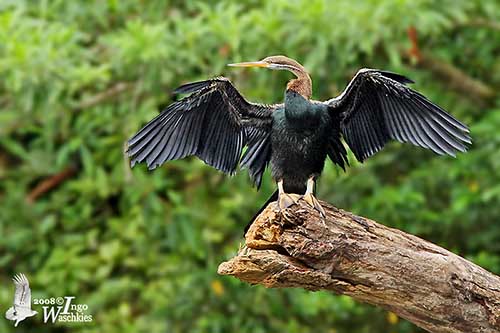
Male
Darters are good fliers. They soar and glide high in thermals, but they also perform powerful wingbeats interspersed with glides. The tail and the flight feathers allow a good manoeuvrability when the birds move in tangled environments such as swamps and forests. They are able to take off from the water, but usually, they fly off from a perch. The bird spreads partially its wings and points the bill forwards before to take flight. The same posture is adopted just after landing.
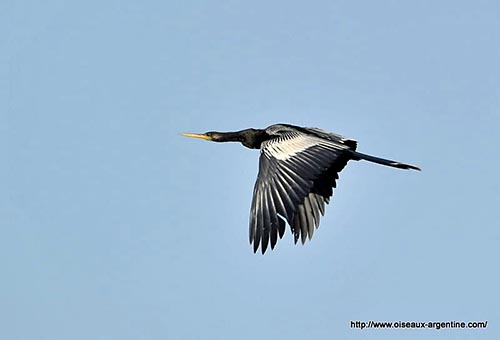
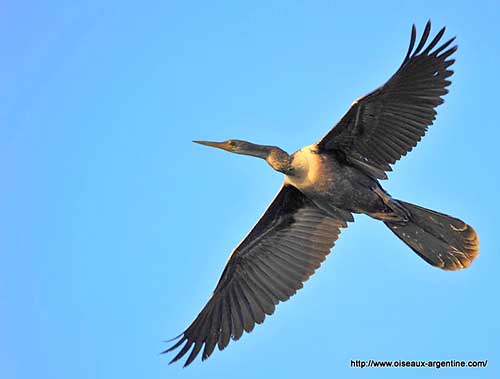
Male
Female
Their diet includes primarily fish, but numerous aquatic preys such as amphibians, reptiles, insects, crustaceans, molluscs and leeches are also taken. The fish species depends on the range, but they are often quite small, less than 10 centimetres.
Darters may gather at abundant food sources, but they usually fish alone.
These birds fish on and underwater. They are not very active and forage in shallow waters. They dive slowly and the wings are partially open below the surface, in order to attract prey in the provided shade. They do not chase the preys but wait for it to come. The prey is stabbed in the side by the strong movement of the head and neck, and the fish is impaled on both mandibles. This technique and the diving style of Anhingidae indicate that they can catch mainly slow-moving preys and preferably laterally compressed fish living in shallow water.
After fishing, they go off to a perch in order to dry their plumage. Wings and tail are widely spread in the sun.
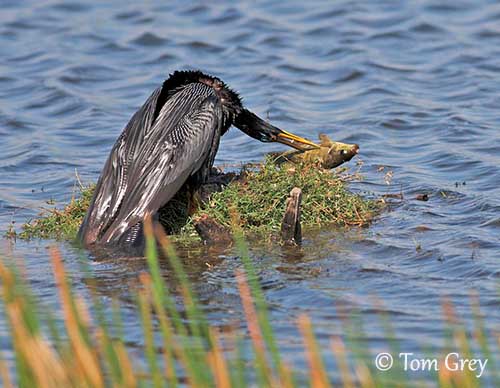
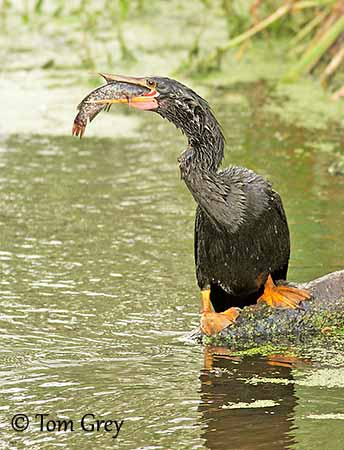
Male
Female
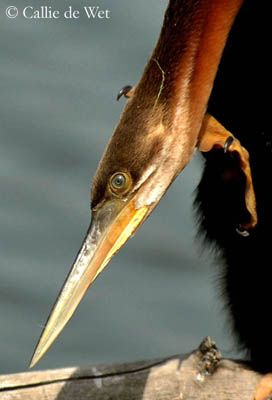
Female
Darters are monogamous with probably long-term pair-bonds. They can be solitary nesters or form loose groups of several pairs. However, occasionally, large colonies are formed, and they often breed alongside other waterbirds including cormorants, herons, egrets, storks and ibises.
At the beginning of the breeding season, the males perform aerial displays such as soaring flights and glides. Then, each male selects a nest-site by placing some vegetation, often leafy twigs, in a tree fork or in an old nest. The territory is also established around the nest-site, and may include a whole tree.
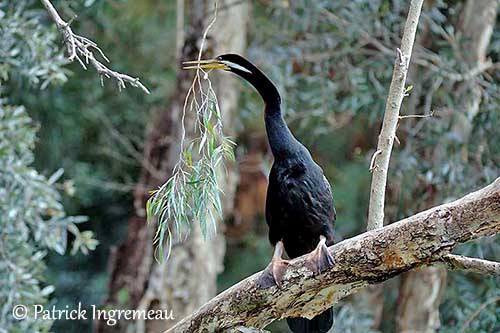
Male
The male displays at the nest-site, performing several movements of body, head, neck, wings and tail. During the “wing-waving” display, it raises the wings alternately while the neck is stretched out at different angles. The tail is lifted up and pointed forwards whereas head and neck are thrust forwards to seize a twig with the bill. If a female approaches, these displays are more intense.
Once the pair is formed, both mates build the nest, usually within a day. The male brings material to the female. The structure is a bulky stick platform lined with greenery, often leaves and green twigs.
The copulation occurs on the nest. Prior to copulation, both produce several explosive notes. During the act, the male may take a stick or the female’s bill in its own beak.
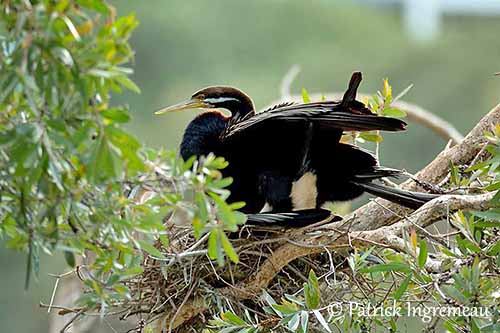
Male
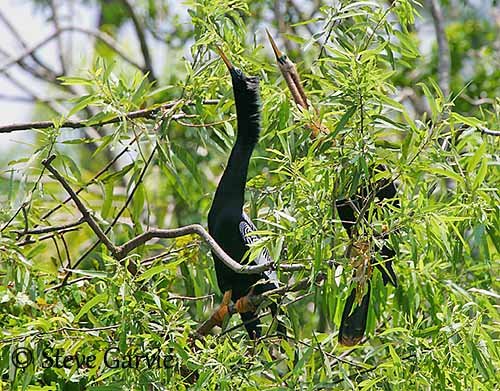
Displaying pair
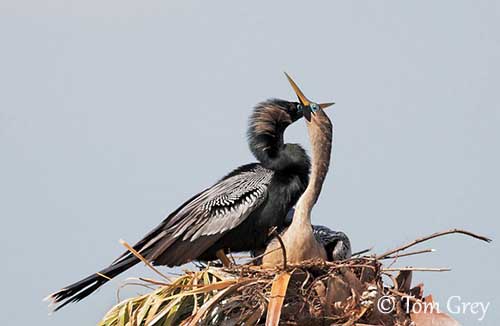
Displaying pair
Away from the nest, darters are mainly silent, only giving some clicking calls and rattling sounds. In the nest, they are more vocal and produce croaks, rattles and grunts, and a rolling repetitive call is given before settling on the nest.
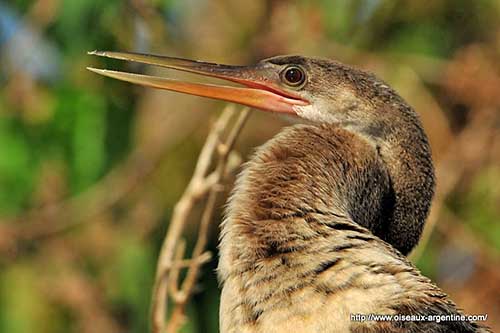
Female
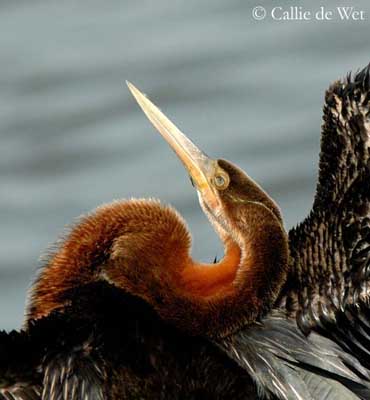
Female
The female lays two to six (usually four) pale green or bluish-white eggs with dark markings, led at one to three days intervals. Both adults share the incubation and take turns. They incubate with their webbed feet. Greeting ceremony occurs when they start or end their shifts. Calls and displays including wing-waving, snapping-bill and bowing are performed by the leaving bird.
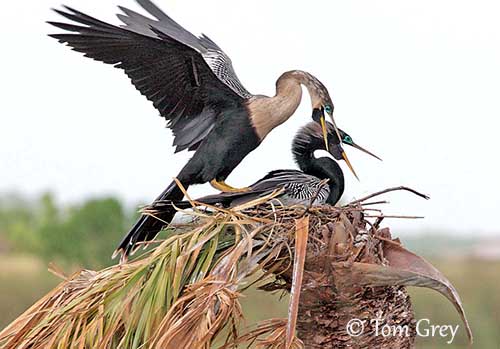
Displaying pair
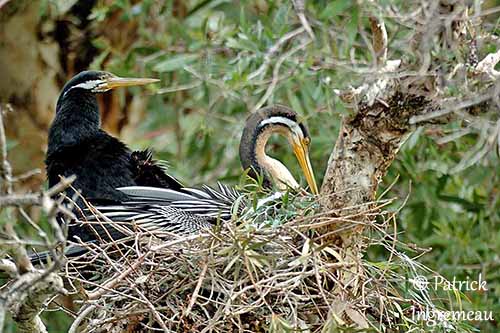
Pair at nest
The incubation lasts about 25-30 days. At hatching, the chicks are naked, but white down grows within two days, slightly darker on the upperparts.
The chicks are very noisy when begging for food while waving their heads and flapping their wings. The food includes semi-digested and regurgitated fish, dribbling in liquid form from the adult’s bill into the mouth of the chick. Later, they obtain solid food by forcing head and upper neck into the adult’s throat. Some fights may occur between chicks during feeding as they peck at each other.
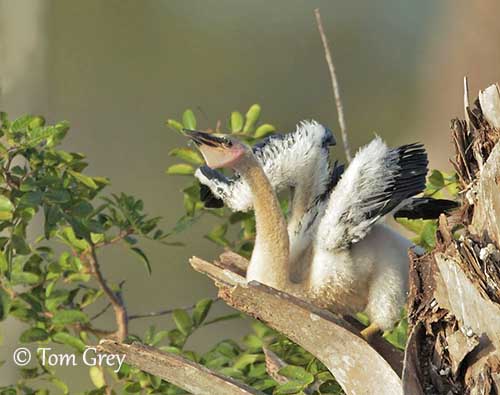
Chick
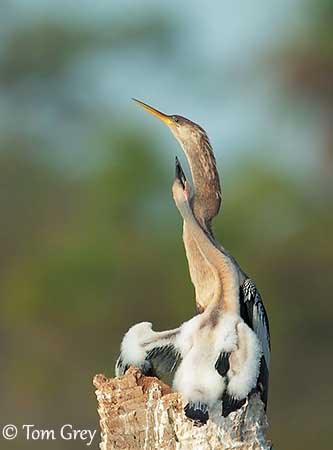
Adult female and chick
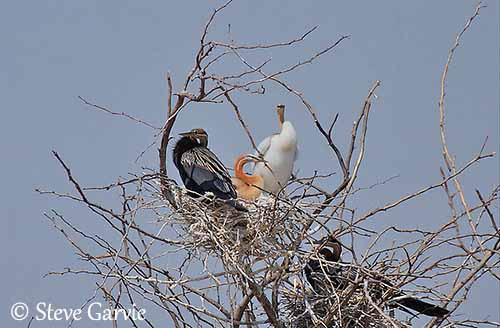
Family at nest
As the nest is often placed near water on overhanging branches of emergent tree, the chicks are soon able to jump from the nest into the water. If threatened, they can swim or dive to escape a danger. To return to the nest, they climb back into it, by using claws, feet, neck and wings. They start to leave the nest three weeks after hatching, perching on the nearby branches where they are still fed by the adults only once a day. At six or seven weeks old, they begin to fly.
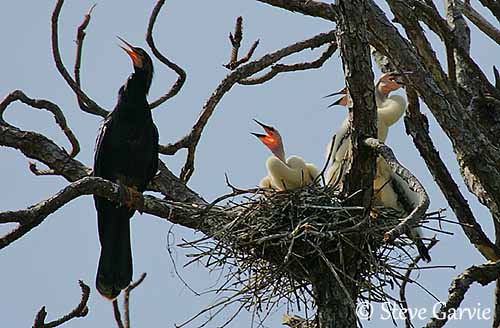
Adult and chicks
Darters are very territorial and do not tolerate other birds in the vicinity of the nest. Threat displays are performed, accompanied with postures, walking and hopping over the branches with partially spread wings and bill open. Near the intruder, the male makes snapping movements with the bill. Fights may occur with the birds pecking at each other.
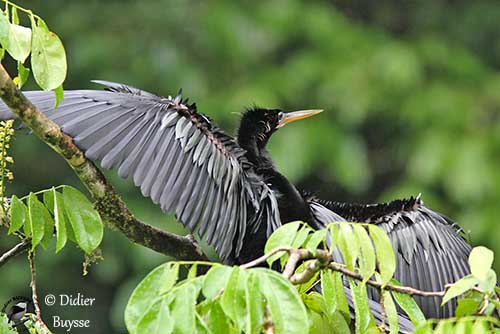
Male
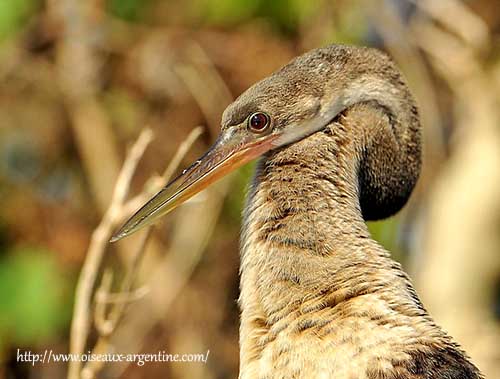
Female
During the moult, especially the complete post breeding moult during which the flight feathers are dropped, the birds are very cautious and vigilant. They avoid to perch in open high places and slip quietly into the water at the slightest danger.
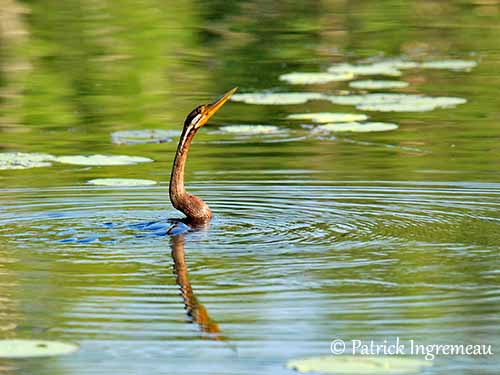
Female
The African Darter is not globally threatened and currently evaluated as Least Concern.
Three subspecies are recognized:
A.r. rufa is found in Sub Saharan Africa
A.r. vulsini occurs in Madagascar
A.r. chantrei is found in the wetlands of Iraq and Iran.
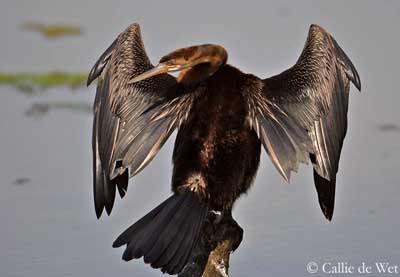
Male
The Anhinga is not currently threatened and evaluated as Least Concern.
Two subspecies are recognized:
A.a. anhinga is found in South America from Colombia S to Ecuador and E of Andes to N Argentina. Also Trinidad and Tobago.
A.a. leucogaster occurs in E and S USA, W and E Mexico, Central America to Panama, and Cuba.
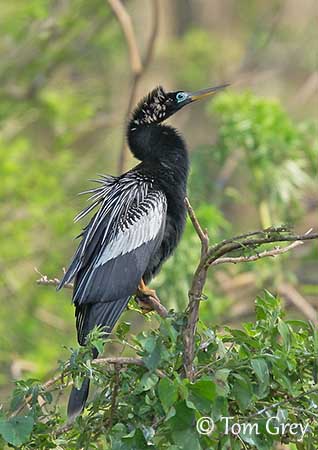
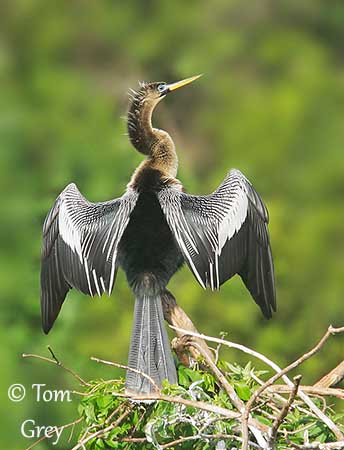
The Australian Darter is evaluated as Least Concern too.
Two subspecies are recognized:
A.n. novaehollandiae occurs in Australia, except in the arid interior.
A.n. papua occurs in New Guinea lowland and satellite islands.
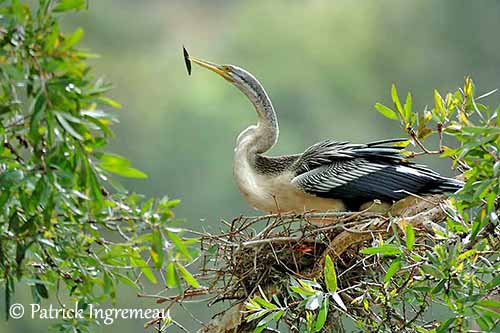
Female at nest
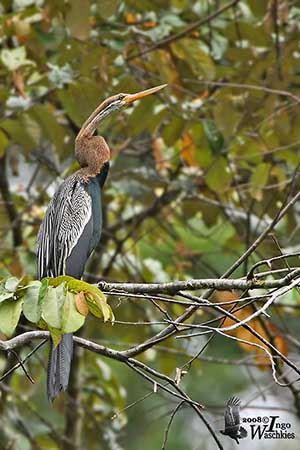
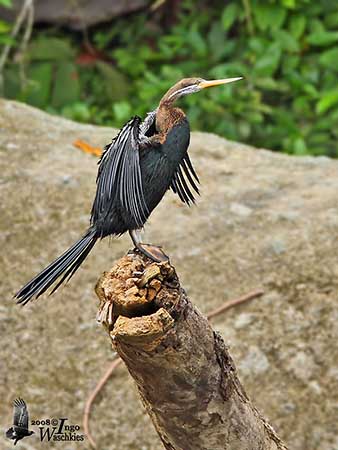
Male
Darters have been exploited for human consumption. Their eggs are very appreciated in parts of Asia. They have been used by nomadic tribes in Assam and Bengal for fishing, but this practice is now finished.
They are losing their habitat with the drainage of wetlands, leading to a reduction of suitable available areas. Pollution of freshwater rivers and reservoirs is an important threat too, like disturbances. However, three species are not currently threatened.
Formerly placed in the order Pelecaniformes, the darters are now in the order Suliformes. But morphological, ethological and molecular analyses suggest that darters are closely related to Sulidae. The order Suliformes includes the cormorants and shags, very similar to darters, the Fregatidae and the Sulidae, all coming from Pelecaniformes.
Darters are commonly seen perched on isolated branch with spread wings and tail in the sun. This vision is the typical image of darters!
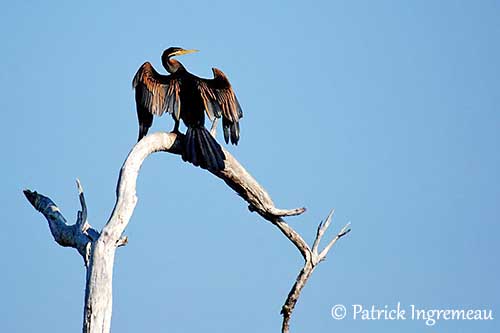
Male